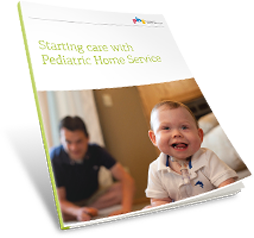Clinical Online Education
Ventilation Basics (Online Curriculum)
This interactive, narrated, self-paced online course focuses on the basic skills needed to care for invasive and noninvasive ventilator patients. There is an emphasis on the home care environment. Topics include:
- Patient Interfaces
- Ventilator Circuits
- Ventilator Settings
- Ventilator Modes
- Measured Values
- Ventilator Alarms
- Safety Procedures and Emergency Backup Options
An optional, in-classroom lab for hands-on time is available for participants to practice
- Proper assembly and use of a resuscitation bag to ventilate a mannequin.
- Assembly of vent circuits.
- Check ordered parameters and verify vent settings.
- Identify and record measured patient values.
- Connect oxygen to the ventilator.
- Connect an external battery to the ventilator
- Respond to common ventilator alarms appropriately
The optional lab takes place at Pediatric Home Service in Roseville, Minnesota. NOTE: This is not a skills competency. Each employer is responsible for ensuring their staff’s competence.
1.5 contact hours will be awarded to online class participants.
Criteria for successful completion to receive 1.5 contact hours
- Completion of all course modules
- Achieving a passing score of 85% on post-test
- Completion and submission of evaluation form
There is no conflict of interest for anyone with the ability to control content of this activity
This nursing continuing professional development activity was approved by the Ohio Nurses Association, an accredited approver by the American Nurses Credentialing Center’s Commission on Accreditation (OBN-001-91). Activity Number 2022-0000000765. Expiration date 1/7/2025.
Objectives: Upon completion of the presentation, the participant will be able to
- Explain the differences between invasive and noninvasive patient interfaces.
- Demonstrate an understanding of ventilator circuits, including tubing options, exhalation ports and valves, and other adapters.
- Verbalize an understanding of and discuss ventilator modes and settings.
- Describe the differences between pressure and volume ventilation and identify patients who may benefit from each.
- Discuss the differences between ventilator settings and patient values.
- Verbalize what measured patient values indicate and discuss what an increase or decrease in values might mean.
- Describe ventilator alarms and how to respond to them.
- Discuss safety procedures and emergency ventilation options.
Course authors: John Sheahan, RRT-NPS, LRT; Bri Schimelpfenig, BS, RRT-NPS, LRT; Jean Stumpf, BSN, CRNI


